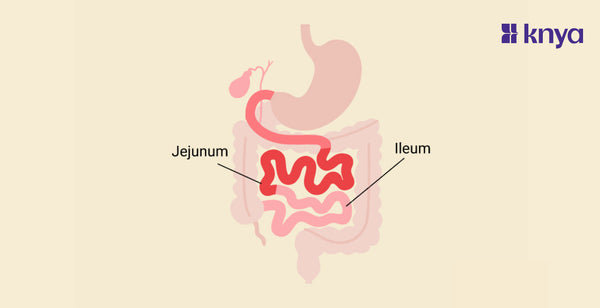Difference Between Regional and Systemic Anatomy: Regional anatomy and systemic anatomy are two ways to study human anatomy, each offering a unique viewpoint on the body's organisation. Regional anatomy examines particular areas or parts of the body, such as the head, neck, chest, or belly. It entails investigating the structures inside a certain region and their interlinks. In contrast, systemic anatomy examines the body's systems or organ systems. It is the study of structures and organs that collaborate to fulfil a shared function, regardless of where they are located in the body.
Regional Anatomy
- Focuses on studying the body in sections or parts (e.g., head and neck, thorax, abdomen, etc.)
- Highlighting the spatial relationships between different structures within a region.
- Helps in understanding how organs and systems work together in specific areas
- Examples: studying the muscles and nerves that move the arm, or the organs and blood vessels within the abdomen
Systematic Anatomy
- Focuses on studying the body by organ systems (e.g., skeletal, muscular, nervous, etc.)
- Spotlighting the structure and function of individual organs and how they contribute to the system as a whole
- Useful for understanding the overall physiology of the body and how different systems interact.
- Examples: studying the structure of the bones and how they form the skeleton, or the function of neurons in the nervous system
Difference Between Regional and systemic anatomy
Both approaches are beneficial. Regional anatomy shows how structures work together in localised locations, whereas systemic anatomy shows the broad orchestration of body activities. Finally, grasping the human body is identical to learning the city map: knowing both the alleys and the big avenues provides us with a whole view of this fascinating metropolis.
Let's put the spotlight on the difference between Regional and Systematic as each has unique key elements.
|
Aspect |
Regional Anatomy |
Systemic Anatomy |
|
Focus |
Examines specific regions or areas of the body, e.g., head, abdomen. |
Concentrates on the study of organ systems as a whole. |
|
Scope |
Narrower in scope, focusing on detailed examination within a region. |
Broader in scope, studying how organ systems interact. |
|
Approach |
Takes a localised and detailed approach, often in a clinical context. |
Emphasises the interconnectedness of organ systems. |
|
Teaching Emphasis |
Often taught in a structure-by-structure manner for a given region. |
Typically taught by exploring the functions of organ systems. |
|
Clinical Application |
Directly applicable in surgical contexts and localised issues. |
Emphasises understanding for diagnosing systemic diseases. |
|
Example |
Examining structures within the pelvic cavity as a specific region. |
Studying the cardiovascular system as a unified system. |
|
Research Emphasis |
Commonly used in research requiring in-depth knowledge of regions. |
More prevalent in research focused on systemic functions. |
|
Practical Use |
More applicable for surgeons and clinicians dealing with specifics. |
Essential for general practitioners dealing with wide-ranging issues. |
|
Imaging Techniques |
Often used with imaging techniques specific to certain regions. |
Requires understanding of imaging for entire organ systems. |
|
Emphasis on Variation |
Considers variations in structure specific to certain populations. |
Focuses on general structures common to the human species. |
What is Regional Anatomy?
Consider wandering a busy city. You might approach it street by street, digging into the distinct personality of each neighbourhood - that's Regional anatomy. Each area has its own stores, sights, and mood, demonstrating how many components interact. For example, researching the arm entails not only comprehending the muscles but also the bones to which they are connected, the nerves that govern them, and the blood arteries that supply them.
Key Features of Regional Anatomy?
- Focuses on specific areas like head & neck, thorax, or abdomen.
- Maps how structures like muscles, organs, bones, and blood vessels connect.
- Masters region-specific anatomical terms for clear communication.
- Guides surgeons and medical professionals during procedures.
What is Systemic anatomy?
You may approach the city by function, such as following traffic flow, tracing the power system, or mapping the communication network. This is systemic anatomy, where we look at how organs are linked together within a bigger system. Consider the circulatory system, which consists of arteries and veins that branch and loop around the body, bringing oxygen and nutrients to every part of the body.
Key Features of Regional Anatomy?
- Links organ systems like skeletal, muscular, nervous, or circulatory.
- Studies how organ structures optimise their functions.
- Highlights how systems work together and rely on each other.
- Helps pinpoint the source of systemic imbalances or medical issues.
Similarities Between Regional and Systemic Anatomy
- Anatomical Terminology: To describe structures and their interactions, both regional and systemic anatomy employ a similar set of anatomical words.
- Integration: Both regional and systemic techniques are frequently incorporated in a complete anatomy course to offer a broad grasp of the human body.
- Regional anatomy is important in surgical and clinical situations, whereas systemic anatomy assists in understanding and diagnosing disorders that impact several systems.
- Interconnectedness: Recognising structural connectivity is crucial in both methods, with regional anatomy adding to a knowledge of local interconnections and systemic anatomy emphasising greater physiological linkages.
- Methods of Instruction: Dissections, models, imaging studies, and digital resources are used to teach regional and systemic anatomy, respectively.
- Understanding of Function: While regional anatomy focuses on structure, systemic anatomy focuses on the functioning elements of the organism, promoting a comprehensive grasp of anatomy.
- The Value of Medical Education: Regional and systemic anatomy are both key components of medical education that serve as the foundation for numerous medical specialist
- Adaptability: Anatomists and medical practitioners are sometimes required to use both methodologies depending on the context of their job, exhibiting their knowledge's adaptability.
- Evolutionary Perspective: Both regional and systemic anatomy incorporate evolutionary factors, examining how structures and functions in the human species have developed throughout time.
| Check out More Articles | |
| Difference Between Thick and Thin Skin Anatomy | |
| Difference Between Enzyme and Coenzyme | |
| Difference Between Infection and Infestation | |















